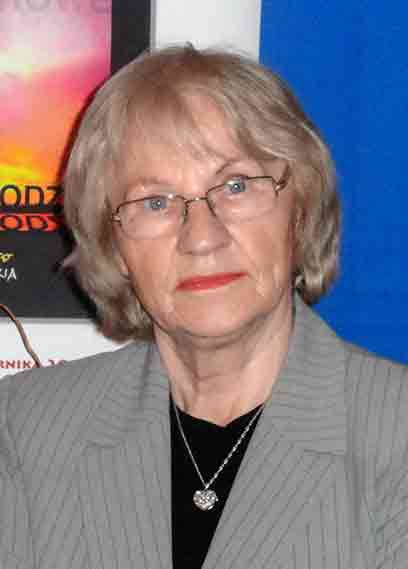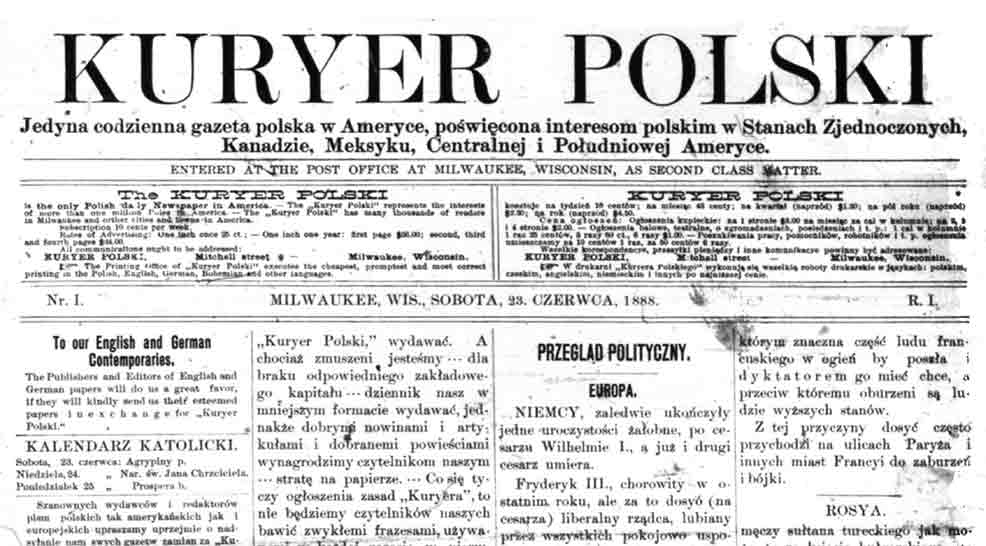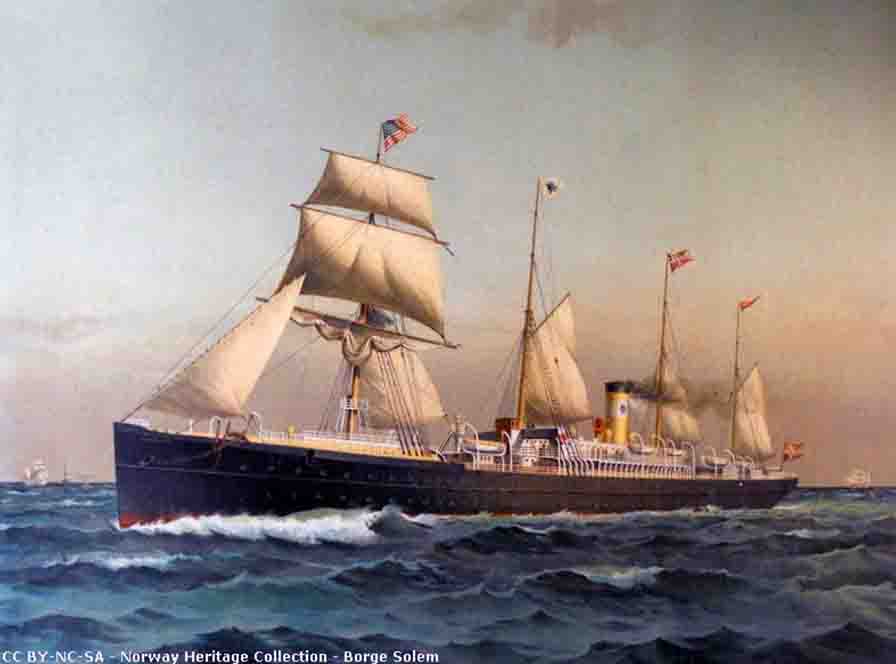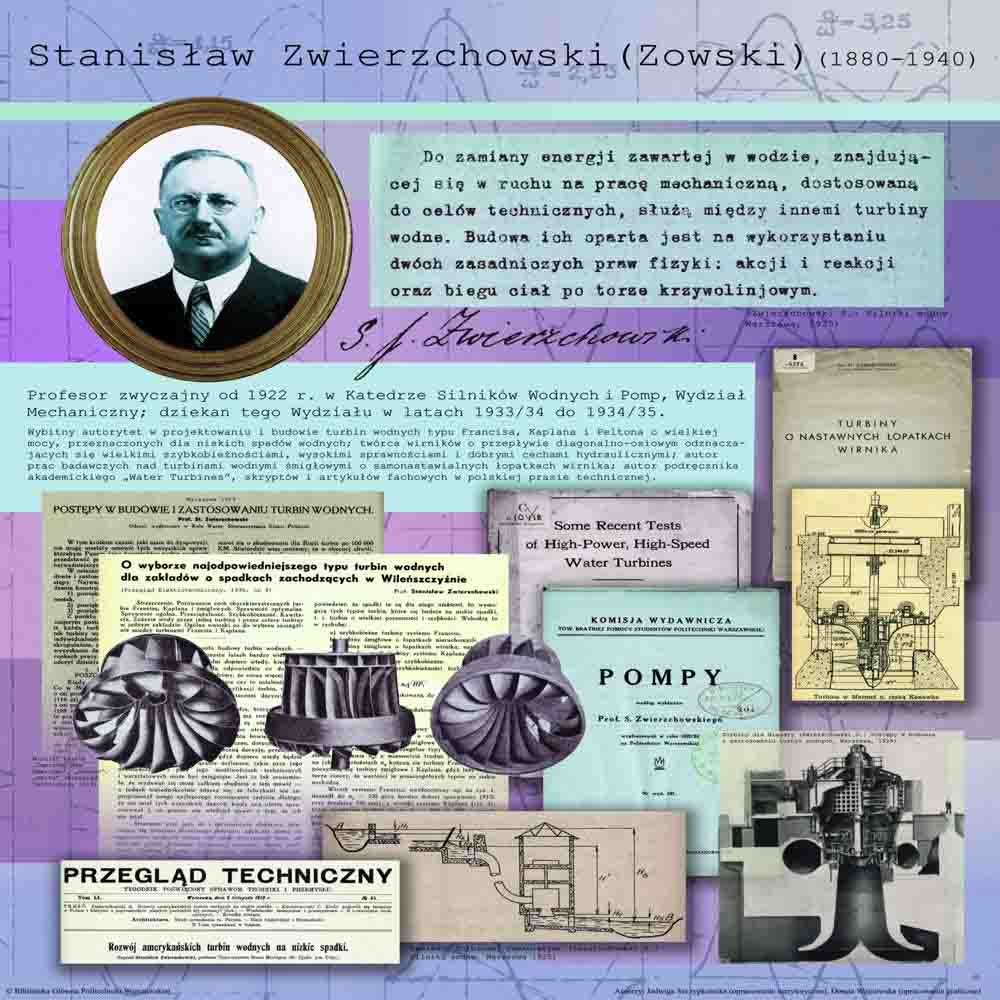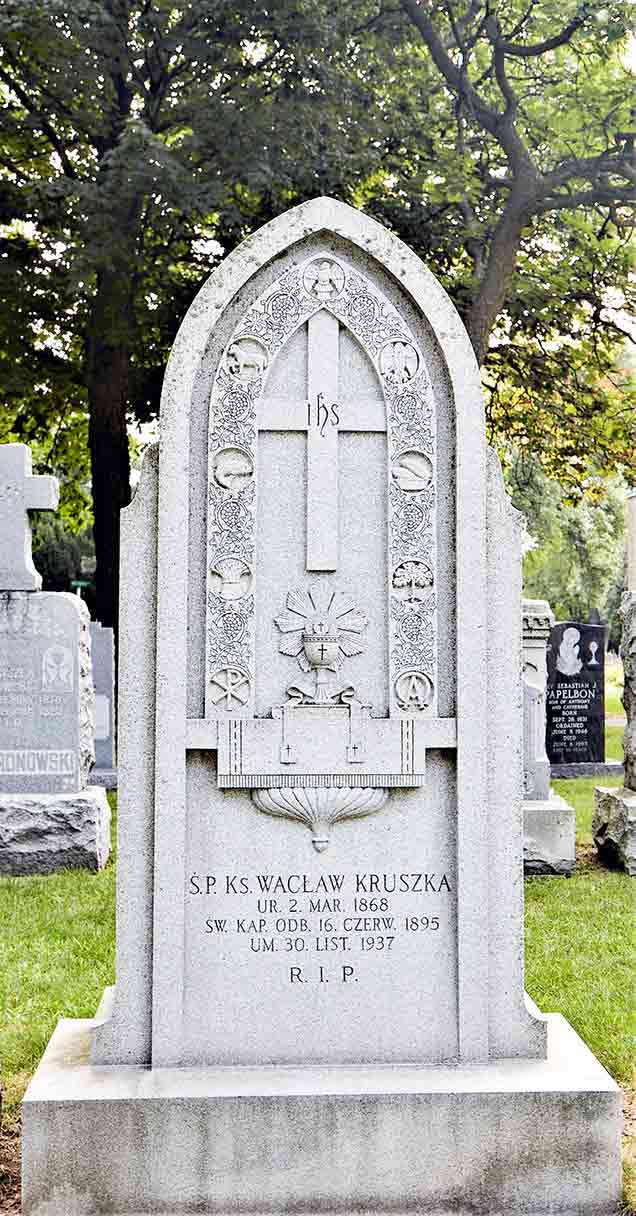Historical documents confirm that the Polish people have always been associated with America. The list of great Poles who made an impact throughout the history of the United States is long. It begins with the semi-legendary “John of Kolno” who supposedly came to this continent 16 years before Columbus. This historical presence includes the settlers of Jamestown as well as General Casimir Pulaski’s and Tadeusz Kosciuszko’s participation in the fight for the independence of the United States. Polish involvement is also evident in today’s astronauts, artists, politicians and other Polish Americans.
The Great Emigration of Poles to America, and especially to the United States, began in the 19th century, after the fall of the November Uprising in 1831. It was caused by the political and economic restrictions of the partitioning powers who wanted to eliminate the Polish state from the map of Europe and the world . . . once and for all.
Several economic repressions, which were followed by restrictions on national freedoms, affected the Prussian partition.
The activities of Hakata (Poles in the Prussian partition were subject to extensive Germanization policies (Kulturkampf, Hakata) and rugs affecting the owners of the land forced Poles to look for another place on earth that would ensure their free development.
The young United States provided them with economic and social opportunities. Poles organized themselves in parish communities around churches. Under the enlightened leadership of certain clergy and secular leaders, this prepared the ground for the future independent Polish state.
In the second half of the 19th century, the press was the source of communication and information. It was the equivalent of today’s internet.
Polish settlers found the best living conditions on the eastern coast, around Lake Michigan and in California. About 150,000 of Polish emigrants settled in Wisconsin, and 70,000 in Milwaukee itself. A strong Polish community center was developed in Milwaukee. It must be remembered that strong leaders grew up here. It was their patriotic actions which shortened the road to re-established Polish independence in 1918, and after regaining it, started to rebuild it.
One of those you should remember is the creator of the U.S.-based Polish language newspaper, the KURYER POLSKI established by MICHAŁ KRUSZKA. The Kruszka family comes from the core of Polishness, which was Wielkopolska, around Gniezno and Pałuki, not far from the oldest Polish settlement in Biskupin.
Michał was born on September 28, 1860 in Słabomierz in the Żniński district. Słabomierz and the Kruszka- family played a great role in Wielkopolska district as local patriotic leaders opposing the Hakata.
Michał's grandfather, Marcin Kruszka, was born in 1777, still in free First Republic of Poland. His father, Jan Kruszka (1820-1887), inherited a farm and guarded his land from German invaders. He got married twice. His first marriage took place in 1841 to Anna Kluczyńska, and the second marriage to Józefa Okońska. Thirteen children were born from both marriages.
Słabomierz was part of the Prussian partition, therefore all inhabitants were considered German citizens, and the Germanization of the Polish population had many aspects. The best known are the elimination of Polish landowners from their property by various methods, the activities of Hakata: the Germanization of schools, the persecution of pro-Polish activists and economic and social organizations.
In order to maintain their social status, devoted farmers such as Kruszka family continued to farm while they provided their children with education in crafts, trade, and other professions.
Michał Kruszka was educated in Poznań, which attracted outstanding patriots and activists of organic work (which was a sociocultural movement that defined progressive thought in literature and in the social sciences. The Polish Positivists viewed work, rather than uprisings, as the true path to maintaining a Polish national identity). Michał very quickly became an activist of those ideas.
He was arrested for pro-Polish agitation and participation in protests against Germanization. After serving his sentence, he decided to emigrate to the United States, following in the footsteps of many brave Poles from Greater Poland Wielkopolska). In 1880 he came to America. He found a job at the Singer sewing machine factory in New Jersey. At the same time, he attended an evening school where he learned printing. In the fall of 1883, after mastering the English language, Michal, his wife Jadwiga, and daughter Aurelia-Matylda, moved to Milwaukee.
He was employed as an insurance agent with the Metropolitan Life Insurance Company from New York. Politics was his great passion. He used the press to publish his arguments, which became the basis of how to earn a living. In 1885, Michał Kruszka started publishing Tygodnik Anansowy, and later the weekly Krytyka. Both magazines did not bring the expected success. It was then that he decided to set up Dziennik Polski. This magazine went bankrupt after 6 months and the founder lost everything. Determined, he borrowed $125 from his friends and, firmly believing that he must now succeed, invested everything in the new project: the KURYER POLSKI.
The magazine first appeared in a small format. After four months, it enlarged the format. The founder, M. Kruszka, wore many hats as publisher, editor, proofreader, and even typesetter. In addition to Kruszka, Kuryer Polski employed two adults and two boys to deliver newspapers. Milwaukee then had 200,000 residents, including 30,000 Poles. The number of Polish emigrants grew, which also favored the rapid development of the newspaper.
These were times when the press was the only source of information, so people were hungry to hear about what was happening in their backyard and in the world. Kruszka took advantage of this opportunity and on June 23,1888 the first issue of Kuryer was published. Three years after its founding, the newspaper already had 3,000 subscribers. The magazine informed its readers about events in Milwaukee, including deaths and funerals. It also advertised products, posted announcements, and anything else that could be of interest to the community of Polish emigrants. Since the founder was interested in politics and was a great Polish patriot, he published information in English that he considered important for American society. It can be considered that Kuryer was the first Polish bilingual newspaper in the United States. Kruszka was a visionary and the contemporary Polish movement would benefit from his experiences. The life of Polish emigrants at that time focused around the parish church. Children learned patriotism in their Saturday parish classes. Michał quickly became involved in the life of the local church.
As the newspaper developed more dynamically, Michał was supported by his two younger brothers who came from Poland: Józef and Wacław Kruszka. Józef was a co-editor while Wacław, a priest and historian, (who was the author of Polish History in America), was also a co-editor.
In 1890, Michał was the first Pole to be elected a representative to the Wisconsin state legislature. Two years later, he became a Wisconsin state senator.
In 1908, the Kuryer celebrated its 20th anniversary as the largest newspaper in Milwaukee. It was 66 pages long and contained valuable information and high-quality advertisements. It was read by the 70,000 people in the Milwaukee Polish community. It was also known to the four million Polish people in America and to many political leaders and politicians.
Michał Kruszka was very involved in matters that pertained to regaining Poland's independence. He lived to see that big day. He died on December 2, 1918.
His remarkable work was continued by his eminent successors Michał Kruszka (1888-1899), Franciszek H. Jabłoński (1901-1905), Stanisław J. Zwierzchowski (1919-1928?), Czesław Dziadulewicz (1928-1936), Józef Kamparski (1937-1940), Franciszek Plichta (1958-1960), Janina Sobogne-Bogusławski (1961-1962). Each of these characters are unique. We will write about their work in future episodes.
KURYER ended its life on September 23, 1962.



